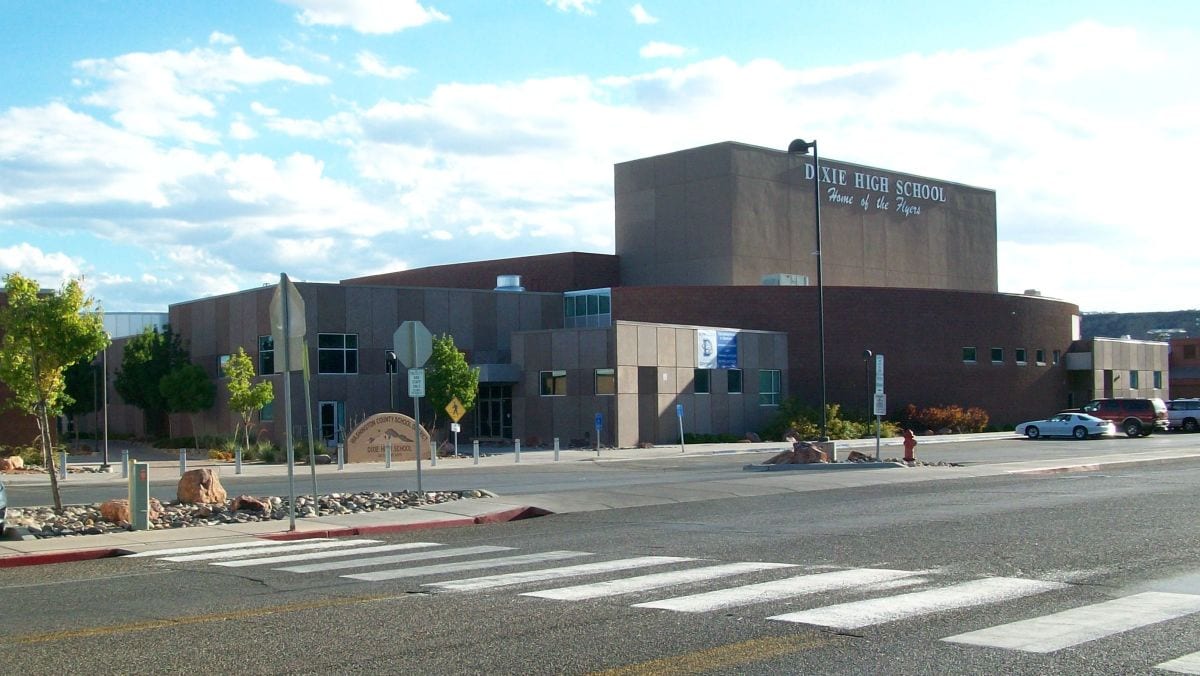
The City of St. George is one of the fastest growing cities in the nation, ranking fifth in a report released by the U.S. Census Bureau earlier in the year. However, another report released around the same time by the Bureau of Labor Statistics paints a grimmer picture for the city’s secondary teachers. According to the report (and a subsequent article by startclass.com), St. George teacher pay ranks third in the nation for the worst average salary for high school teachers, with the city of Logan ranked as the worst city in the U.S. in the same study. According to the report, at the high school level, St. George teacher pay is an average of $39,770 compared to the national average of $58,260. The Bureau of Labor Statistics study compared 330 cities for its findings.
Larry Bergeson, the school superintendent for Washington County, disputes the numbers when it comes to St. George teacher pay and says that the report is either based on erroneous figures or old data. He claims the average for Washington County teachers is $47,382, while entry-level instructors made $36,083. He said that he believes the Startclass.com report was comparing entry-level wages to national average wages.
“They are comparing apples to oranges,” Bergeson said.
The author of the article, Will Laws, says that he stands by the figures cited and pointed out the specific line on the Excel file provided by the Bureau of Labor Statistics.
“Our data is pulled from the Excel docs that come with the zipped file on the BLS site,” Laws said. “In writing this article, I had to go by what the federal government has recorded and made available to the public.”
Laws said that he believes the numbers the government provided regarding St. George teacher pay were strictly for high schools in the city itself, not for the school district as a whole.
St. George teacher pay indicative of a larger state issue
Regardless of what the actual pay for St. George is, The Independent’s investigation into this apparent discrepancy revealed a related issue that is not under dispute: the State of Utah’s lack of funding for public education.
Washington County Executive Director of Human Resources Lyle Cox said that while he agreed the startclass.com article was most likely based on faulty numbers, the State of Utah is ranked near the very bottom of the nation in funding, pointing to the latest statistics released by the Public Education Finances from the U.S. Department of Commerce. Those figures show a per-student expenditure of $6,555. The highest expenditure listed was New York, which spends $19,818 per student. The national average is around $10,000 per student, putting Utah around $4000 less on average for each student.
“Utah ranks dead last in the amount it receives in funding as compared to other schools in the country,” Cox said. “That funding limitation prohibits competitive salaries when compared to other states for hiring or retaining teachers. The full report also supports the fact that administration expenditures are lower than all but Arizona.”
Less funding means less pay for teachers and overcrowded classrooms; Utah ranks second in the nation in student-to-teacher ratio, at 22.5 students per teacher. Less funding can also mean poorer academic performance and outcome. According to a 24/7 Wall Street article, the majority of the top ten states for academic performance—6 out of 10—are also the states who spend the most on their students. Likewise, 7 out of the bottom 10 schools were some of poorest-funded states.
So why does Utah, a top-ten state in which to make a living (according to both Forbes and Money-rates.com), fund it’s public education so poorly?
According to a 2012 report by the Utah Foundation: “Despite the long-time position as last in per-pupil funding, it was once the case that Utah’s funding effort for schools was quite high. This apparent contradiction was labeled ‘Utah’s education paradox’ by Utah Foundation in the 1990s… Many in state politics believe Utah’s education paradox still exists, and it is often cited as a reason that funding cannot improve—implying that there is no capacity to increase funding, because Utah taxpayers are already shouldering a heavy burden and can’t afford more… Utah’s K-12 education funding effort was ranked in the top ten nationally in the early 1990s but fell to below the national average by 2003 and now stands at 29th in the nation (the most recent data for ranking are from 2010.)”
Education in Utah is funded primarily through taxes, but how the taxes are spent has shifted, resulting in less money for K-12 education. Again, from the Utah Foundation report: “The decline in funding effort resulted from three major forces: large property tax cuts in the mid-1990s, reduced reliance on the state-mandated “basic levy”— a property tax controlled by the Legislature for funding equalization purposes, and shifts of income tax revenue to other budgetary needs after the constitutional earmark of income taxes for K-12 education was relaxed by voters in 1996. That earmarking change allowed income taxes to be shared with higher education, but as income tax revenue was added to the higher education budget, general fund monies were taken away and used for other budget priorities. The result of these forces is that Utah no longer has low per-pupil funding but high funding effort. Both measures now rank low against the national average.”
Utah does not score particularly well in regards to the rest of the nation. Education Week gives the state a “C-” grade, and ranks it 35th in the nation overall. Utah does compare well in a few categories, but overall it is below the national average. The grading utilizes a variety of factors to come up with the state grade, including chances for success (where Utah received a “B-”), school finances (“D-”) and K-12 achievement (“D+”).
The National Education Association’s 2014 Ranking of the States report ranks Utah as having the second-highest teacher-to-student ratio in the nation at 22.5, with only Michigan ranking higher.
Not all the news is bad for Utah, however. Financial website Wallethub.com ranked Utah 14th in the nation after doing a detailed study of the education systems in the United States examining two different main factors. The first is school system quality, which is broken down into further subdivisions such as dropout rates, pupil-teacher ratios, and math and reading test scores, and the second factor is safety, which has three subcategories.




What’s not addressed here is the great number of children who are added to our educational system every year. Now that the Great Recession is apparently over (we’ll see), birth rates are back up, which bodes poorly for our schools and the cost to taxpayers. When, if ever, parents will be required to bear more of the brunt for having more kids than is appropriate to expect others to support remains to be seen. It seems to me there should be a limit, say 2-3 kids, that parents get a tax break on and after that they start paying for the “joy” – as they express it – of having these large families. Although all these youngsters can “potentially” provide support for Social Security in the future and be a boon to our economy and society, they can also be a drag and be a negative influence. The rest of our taxpayers should not have to pay for the joy parents glean from having a large brood. Additionally, mixing the funds between public schools and higher education is completely wrong. Higher education has funding opportunities (tuition, etc.) that public schools don’t enjoy.